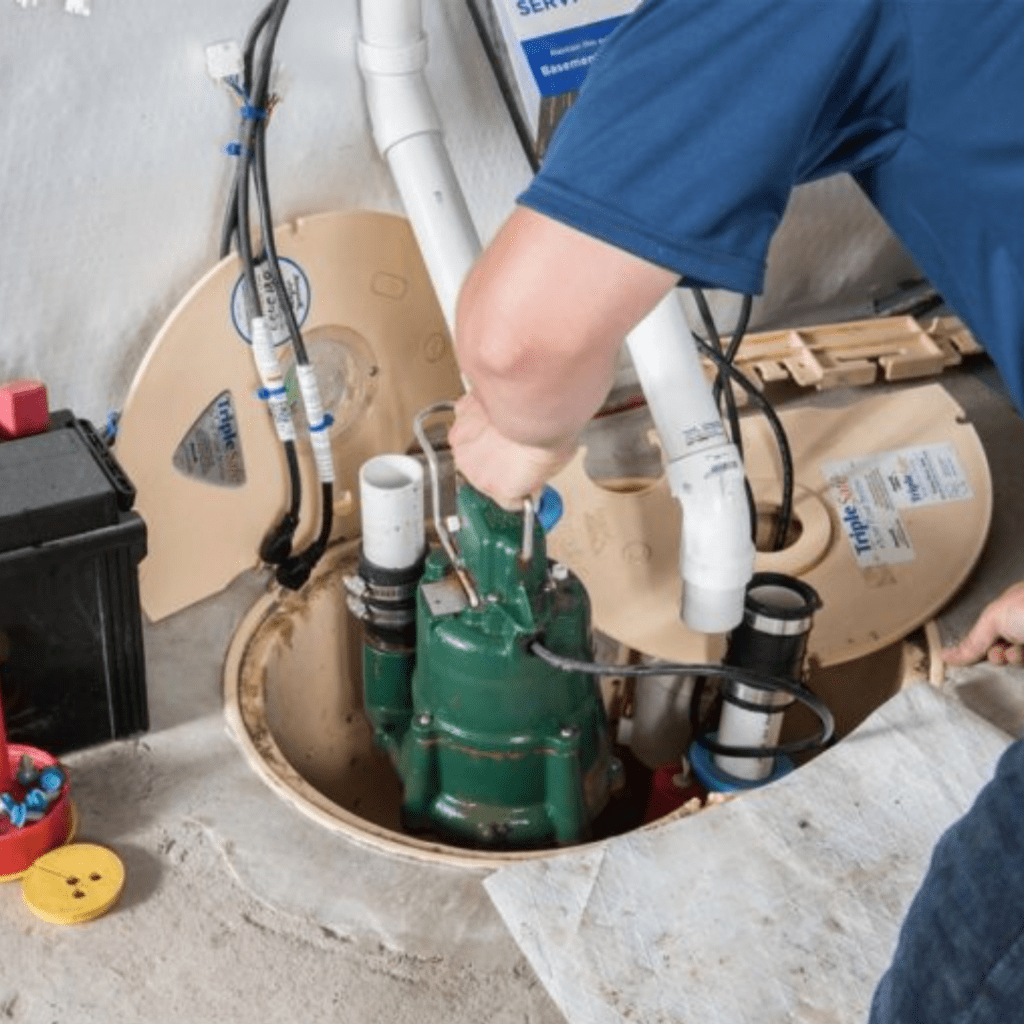You’re tired of dealing with sump pump failures, aren’t you? It’s time to take control!
In this guide, we’ll walk through common issues, unusual sounds, inadequate water removal, overheating, and frequent cycling.
You’ll learn how to spot these problems early and prevent them from escalating.
Let’s dive in and ensure your sump pump’s working optimally. It’s simpler than you’d think!
Identifying Common Sump Pump Issues
Before you can prevent sump pump failure, it’s crucial that you’re able to identify common issues that could lead to a breakdown. Keep an eye out for motor malfunctions, often a result of power problems. You’re dealing with an electrical device, after all.
Check for clogs in the intake screen or discharge lines. Water flow can be hindered, causing the pump to work harder than necessary.
Be mindful of incorrect installation. The pump’s not going to function properly if it’s not situated correctly.
Lastly, watch for worn-out parts. Even the best pumps aren’t immune to wear and tear.
Understand these potential issues and you’re on your way to preventing a sump pump disaster.
Detecting Unusual Sump Pump Sounds
In the context of identifying potential sump pump problems, you’ll also need to pay close attention to any unusual sounds your pump might be making. These could be early warnings of a pending failure.
If it’s humming or buzzing, it could indicate a jammed or damaged impeller. A grinding noise may mean that the pump’s bearings are worn out. If you’re hearing a gurgling sound, it could be a sign of a blocked or incorrectly installed discharge line. A loud thumping could mean the pump is air-locked.
Recognizing Inadequate Water Removal
So, how do you spot inadequate water removal, another key warning sign of a potential sump pump failure? It’s simple.
Watch for an unceasingly damp basement or moisture around the sump pit. If your pump’s running but the water level in your sump pit isn’t decreasing, that’s a red flag. Your sump pump might be struggling and not effectively pumping water.
Another sign could be recurrent flooding in your basement, even if it’s minor. If you’re regularly mopping up water or dealing with dampness, there’s a chance your pump isn’t doing its job.
Don’t ignore these signs. Inadequate water removal could lead to severe water damage, mold growth, and ultimately, a costly sump pump failure.
Observing Sump Pump Overheating
You should also keep an eye out for signs of your sump pump overheating, as it’s a common cause of failure. If your pump is running non-stop, it’s likely to overheat. That’s why it’s crucial to ensure it’s not working harder than it needs to.
Listen carefully; if you hear unusual noises or notice an odd smell, it might indicate overheating. Excessive vibration can also be a symptom. You’ll want to act quickly if you suspect your sump pump is overheating.
One of the best ways to prevent overheating is regular maintenance. Don’t let small problems escalate into a full-blown failure. Keep your pump clean and clear of debris to ensure it’s functioning at its best.
Checking for Frequent Cycling
Another vital step to prevent sump pump failure is checking for frequent cycling, which can indicate an underlying issue. If your pump is constantly turning off and on, it’s a sign there’s a problem. Frequent cycling can wear out the pump prematurely and may signal a too-small basin, a faulty float switch, or a pump incorrectly sized for your needs.
To check, listen for the pump’s operation. If it’s cycling more frequently than every few minutes in heavy rain, you’ve got an issue. You can also monitor the pump’s cycle manually. If it’s turning on and off rapidly, it’s time to investigate further.
Addressing frequent cycling promptly can save you the headache of a total sump pump failure down the line.
Conclusion
Don’t let sump pump issues catch you off guard. Stay alert for unusual sounds, inadequate water removal, overheating, and frequent cycling.
Addressing these early signs can save you from a potential disaster. With the right vigilance and maintenance, you can ensure your sump pump works effectively.
Remember, prevention is always better, and cheaper, than dealing with a flooded basement. Keep your home dry and your peace of mind intact with a functioning sump pump.


